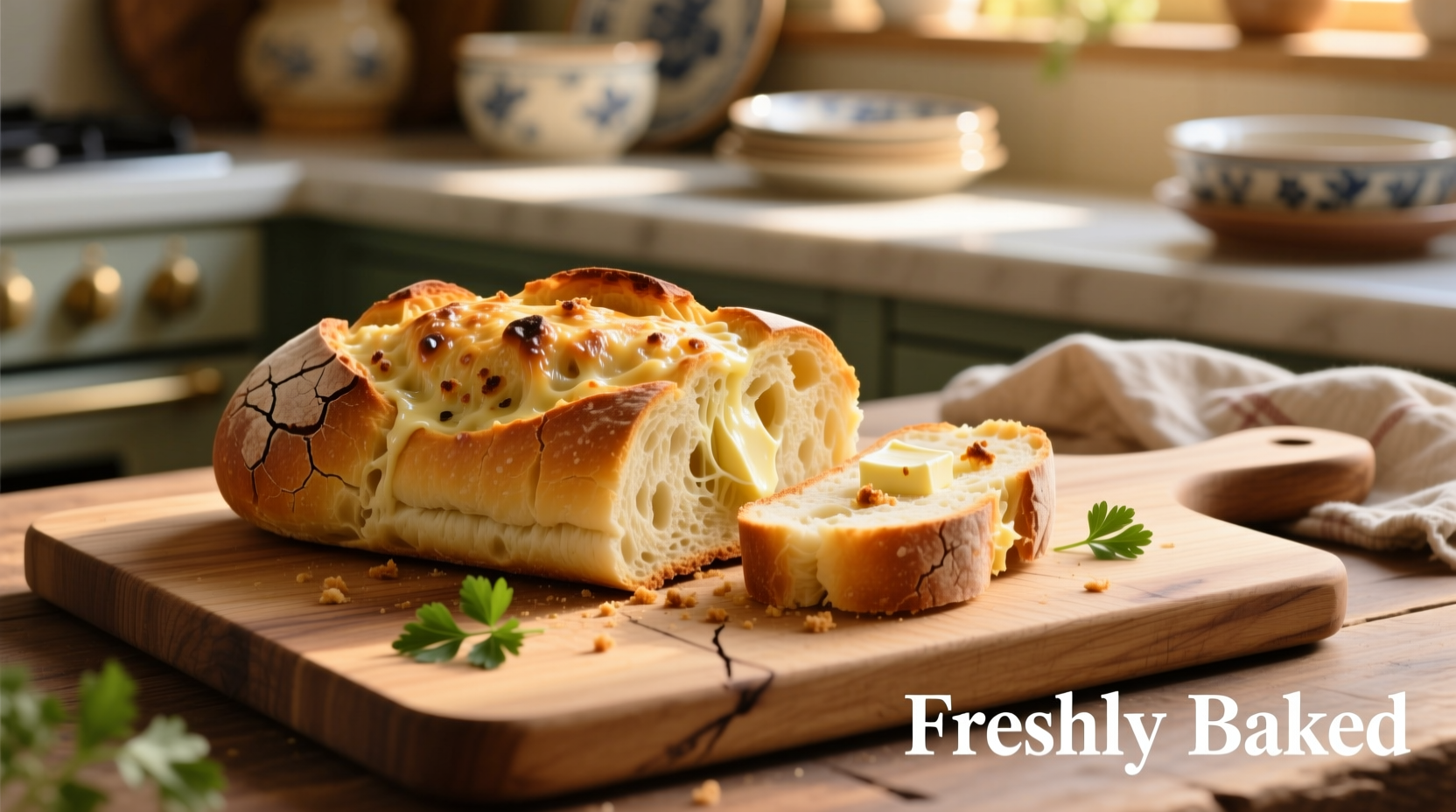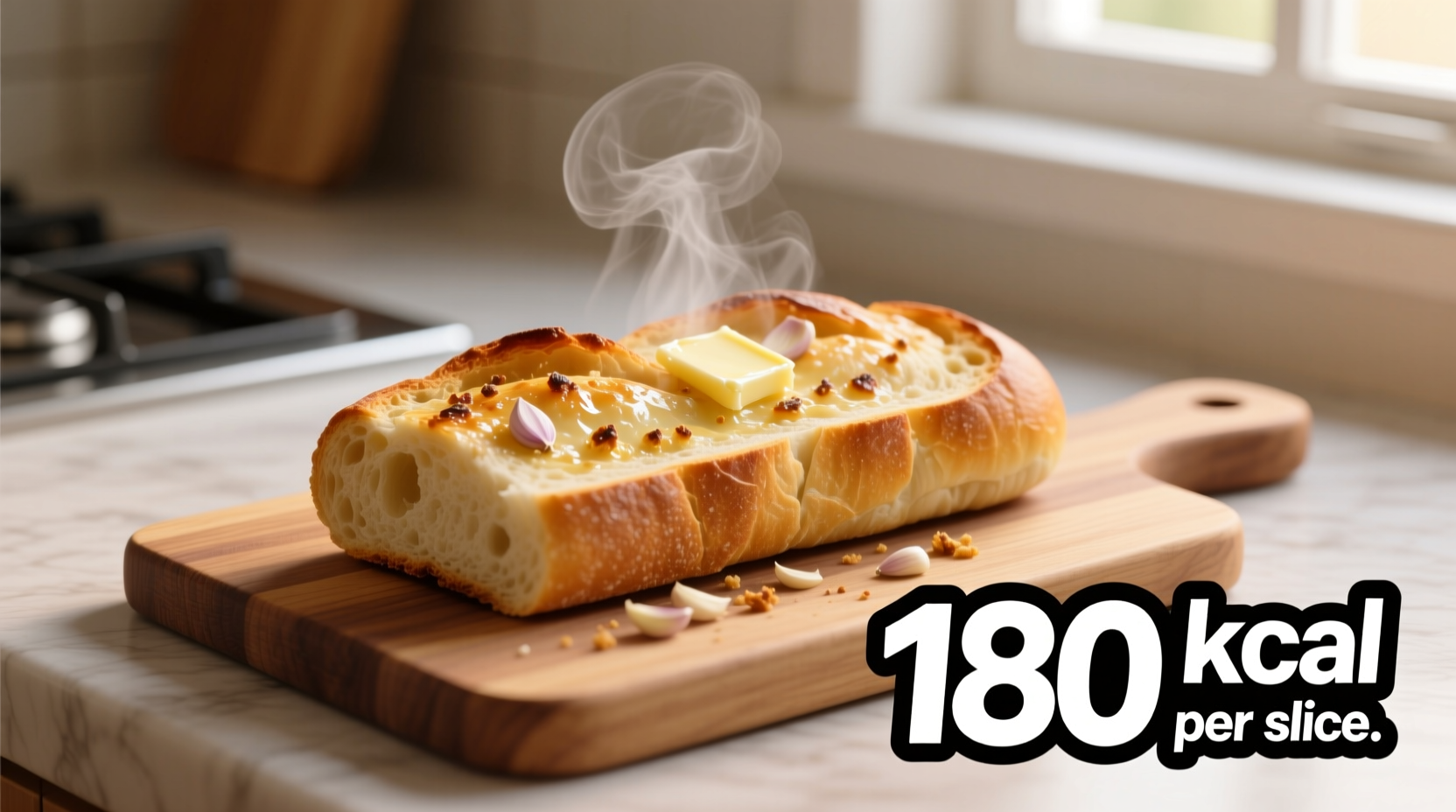Understanding the exact calorie count of garlic bread is essential for anyone tracking their nutritional intake. Whether you're managing dietary goals, monitoring carbohydrate consumption, or simply curious about this popular side dish, knowing the precise numbers helps make informed food choices.
What Determines Garlic Bread's Calorie Count?
Garlic bread isn't a standardized product—it varies significantly based on preparation methods and ingredients. The calorie content changes depending on several key factors:
- Bread base: French baguette vs. ciabatta vs. sourdough
- Fat content: Amount of butter or olive oil used
- Additions: Cheese, herbs, and other flavorings
- Portion size: Critical for accurate calorie tracking
Calorie Breakdown by Preparation Method
Based on data from the USDA FoodData Central database, here's how different preparation methods affect the calorie count:
| Preparation Type | Portion Size | Calories | Primary Contributors |
|---|---|---|---|
| Homemade (basic) | 1 slice (2 oz/56g) | 150-180 | Bread (60%), Butter (40%) |
| Restaurant style | 1 slice (3.5 oz/99g) | 250-350 | Bread (45%), Butter (35%), Cheese (20%) |
| Store-bought frozen | 1 package (3.25 oz/92g) | 200-240 | Bread (50%), Margarine (40%), Additives (10%) |
| Cheesy garlic bread | 1 slice (2.5 oz/71g) | 220-280 | Cheese (40%), Bread (35%), Butter (25%) |
Understanding Portion Distortion
One of the biggest challenges with garlic bread calories is portion distortion. Restaurant servings often contain 1.5-2 times more than standard portions listed in nutritional databases. A typical restaurant garlic bread slice weighs approximately 3.5 ounces compared to the standard 2-ounce portion used in nutritional calculations.
According to a 2024 study published in the Journal of Nutrition Education and Behavior, restaurant bread baskets contribute significantly to unexpected calorie intake, with garlic bread being among the highest calorie options. The study found that 78% of diners underestimated the calorie content of garlic bread by at least 30%.

Homemade vs. Store-Bought: Making Healthier Choices
When preparing garlic bread at home, you control the ingredients and can make healthier versions without sacrificing flavor:
- Use olive oil instead of butter: Reduces saturated fat while maintaining flavor
- Choose whole grain bread: Adds fiber and nutrients with minimal calorie increase
- Measure fats precisely: Use 1 tablespoon of oil per 4 slices instead of pouring freely
- Add flavor with herbs: Increase garlic, parsley, and other herbs to reduce need for added fats
The American Heart Association recommends using heart-healthy fats in moderation, suggesting that replacing saturated fats with unsaturated alternatives like olive oil can support cardiovascular health while still enjoying flavorful foods.
Tracking Garlic Bread in Your Diet
For accurate dietary tracking:
- Measure your actual portion size using a kitchen scale
- Calculate based on your specific ingredients
- Consider the entire serving—not just the bread base
- Account for any additional dips or spreads served with it
Nutrition professionals emphasize that occasional garlic bread consumption fits within balanced eating patterns. The key is awareness and portion control rather than complete elimination of enjoyable foods.
Common Questions About Garlic Bread Nutrition
How many calories in a typical restaurant garlic bread serving?
Restaurant garlic bread typically contains 250-350 calories per slice (approximately 3.5 ounces), with higher values for cheesy versions. Restaurant portions are often larger than standard servings, contributing to the higher calorie count.
Is garlic bread high in carbohydrates?
Yes, garlic bread contains approximately 15-25 grams of carbohydrates per standard 2-ounce slice, primarily from the bread base. The exact amount varies based on bread type, with sourdough generally having slightly fewer net carbs than white bread varieties.
Can I make lower-calorie garlic bread at home?
Absolutely. Using whole grain bread, measuring olive oil precisely (1 tbsp per 4 slices), and adding extra garlic and herbs can create a flavorful version with 25-30% fewer calories than traditional recipes while increasing fiber content.
How does garlic bread compare to plain bread nutritionally?
Garlic bread typically contains 50-100 additional calories per slice compared to plain bread of the same size, primarily from added fats. A plain baguette slice (2 oz) has about 140 calories, while the garlic version ranges from 190-240 calories depending on preparation.
Does the type of bread affect garlic bread's nutritional profile?
Yes, significantly. Whole grain bread adds fiber and nutrients with minimal calorie difference, while ciabatta and sourdough may have slightly different carbohydrate profiles. The bread type accounts for 50-60% of the total calories in basic garlic bread preparations.











 浙公网安备
33010002000092号
浙公网安备
33010002000092号 浙B2-20120091-4
浙B2-20120091-4